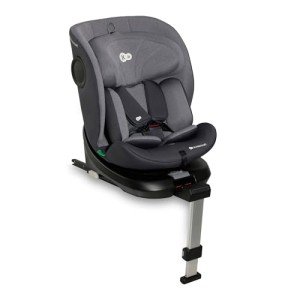
The Comprehensive Guide to Choosing the Right Pram for Newborns
The arrival of a newborn brings both immense delight and a range of decisions that parents need to browse. Among the essential purchases is choosing the right pram, which not only makes sure the baby's safety however also offers convenience for moms and dads. This guide aims to provide a thorough check out selecting the suitable pram for newborns, going over different types, functions, security considerations, and maintenance suggestions.
Comprehending the Types of Prams
Prams vary commonly in style and performance, which can be frustrating for new moms and dads. Here's a breakdown of the most typical kinds of prams readily available in the market:
| Type of Pram | Description | Pros | Cons |
|---|---|---|---|
| Traditional Prams | Developed for infants, these prams generally have a deep bassinet. | Comfy for newborns, Safe for sleeping. | Bulky and heavy, Hard to steer in tight areas. |
| Travel Systems | A combination of a safety seat and a stroller, enabling simple shift between car and stroller. | Versatile and convenient, Cost-effective. | Might be heavier than standalone strollers, Not all elements are appropriate for newborns. |
| Light-weight Strollers | Compact and simple to steer, these are perfect for moms and dads on the go. | Portable and easy to use, Generally more affordable. | Less cushioning, May not recline completely for newborns. |
| Convertible Strollers | Strollers that can adjust from a carrycot for newborns to a young child stroller. | Multi-functional and long-lasting, Adjustable configurations. | Can be pricey, May need more maintenance. |
| All-Terrain Strollers | Constructed for rough surfaces, these strollers generally feature larger wheels. | Durable for outdoor usage, Stable on various surface areas. | Much heavier and bulkier, Can be hard to guide indoors. |
Secret Features to Consider
When picking a pram double for newborns, a number of features can considerably affect use and security. Here are essential features to bear in mind:
- Safety Harnesses: Look for a pram that includes a five-point security harness to guarantee the baby remains protected while in transit.
- Reclining Seat: A fully reclining seat allows newborns to lie flat, which is vital for their spine and respiratory health.
- Suspension System: A good suspension system provides a smoother trip, essential for the fragile bodies of newborns.
- Brake System: Ensure the pram has a reputable brake system to avoid mishaps. Hand brakes or foot brakes can be effective options.
- Storage Space: Consider a pram with ample storage space for diaper bags, shopping, or other fundamentals.
- Weight and Foldability: Choosing a light-weight alternative that folds easily is essential for benefit, especially for public transport.
Safety Considerations
Focusing on safety is critical when it comes to prams for newborns. Here are essential safety suggestions to make sure the well-being of your baby:
- Check for Stability: Make sure the pram remains steady when stationary. A wide base can supply increased stability.
- Avoid Overloading: Only location items recommended by the maker in the storage basket; excess weight can result in tipping.
- Routine Maintenance: Inspect the wheels, brakes, and harness systems consistently to ensure they work properly.
- Buckle Up: Always use the safety belt, even for quick trips, to prevent the baby prams from slipping or falling out.
- Enjoy for Age Recommendations: Follow the maker's guidelines regarding weight limits and age recommendations for safety.
Maintenance Tips
Taking care of a pram ensures its durability and safety for your newborn. Here are vital maintenance tips:
- Regular Cleaning: Wipe down the pram frame and wash fabrics according to maker instructions to keep it hygienic.
- Examine the Wheels: Check wheels for damage and tidy them frequently to avoid obstructed motion.
- Examine Folding Mechanism: Ensure the folding mechanism runs efficiently without sticking or jamming.
- Lubricate Moving Parts: Apply the proper lube to moving parts to ensure quiet and seamless operation.
- Shop Properly: When not in use, keep the pram in a dry area to avoid rust and Baby Prams maintain fabric stability.
Frequently Asked Questions (FAQs)
1. How long can a baby be in a pram?
For newborns, it is normally encouraged to limit undisturbed time in a pram to about 1-2 hours to prevent concerns with development and flow.
2. Which pram is best for a newborn?
The very best pram for a newborn is one that offers a totally flat recline, has an excellent security harness, and satisfies current safety requirements. Numerous moms and dads prefer travel systems for their flexibility.
3. Can I use a stroller without an automobile seat for a newborn?
It's advised to utilize a stroller with a flat or near-flat recline for newborns. Some strollers are only appropriate from 6 months and up, so examine the producer's guidance.
4. When should I switch from a pram to a stroller?
You can move from a pram to a stroller when your baby can sit up independently, typically around 6 months, however this can differ. It's always best to consult the individual pram or stroller guidelines.
5. What is the very best method to clean my pram?
Constantly describe the manufacturer's guidelines, but normally, you can clean fabrics with mild soap and water and clean down hard surface areas with disinfectant wipes.
Picking the ideal pram for Pushchair Sale a newborn is a substantial decision that impacts both the baby's comfort and the moms and dad's way of life. By comprehending the kinds of prams available, essential features to consider, safety techniques, and upkeep tips, parents can make informed choices that improve their household's mobility and guarantee the security of their children. Investing time in research now pays off in the long run for satisfying outings and cherished memories.











